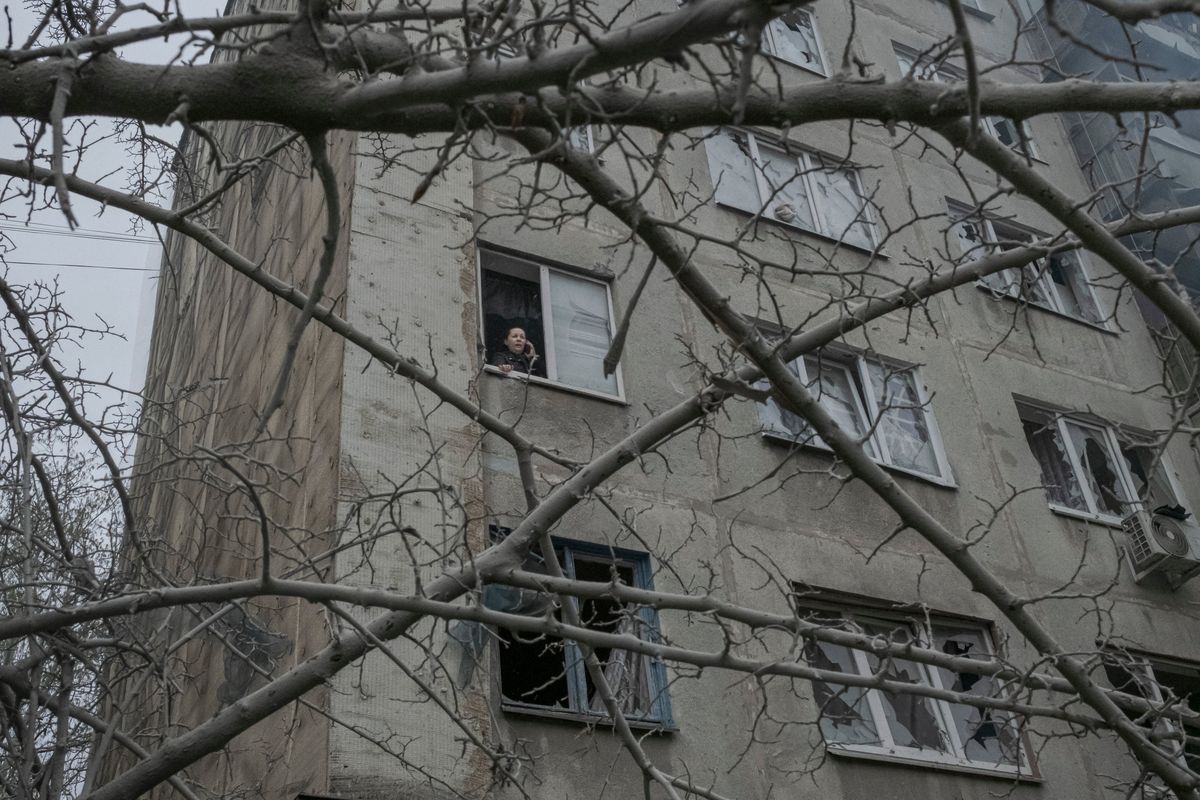Death toll from Russian missile attack in Ukraine climbs to 11

KYIV, Ukraine – Rescue workers pulled more bodies from the rubble Saturday after a Russian missile attack on a residential neighborhood in the eastern Ukrainian city of Sloviansk killed at least 11 people, as fighting raged farther southeast for control of the city of Bakhmut.
On Saturday, emergency workers retrieved two bodies from the remains of a five-story apartment building, a spokesperson for the State Emergency Service, Veronika Bahal, told Ukrainian television. A 2-year-old boy had been rescued from a building Friday but then died in an ambulance, officials said.
Russia sent a barrage of missiles into a residential area of Sloviansk on Friday, according to Ukrainian officials. The head of the regional military administration, Pavlo Kyrylenko, said that 21 others had been injured. He added that 34 apartment buildings were damaged in the barrage, along with an administrative building and shops.
On Saturday morning, Vadym Lyakh, a local official, told Ukrainian broadcaster Suspilne that five people were still believed to be trapped under the rubble.
Ukrainian President Volodymyr Zelenskyy condemned the attack and noted that it had taken place on Good Friday, at the start of one of the Orthodox Church’s most important religious festivals.
“Another strike by terrorists,” Zelenskyy said in an overnight speech. “This is an evil state,” he said in reference to Russia, “and it will lose. To win is our duty to humanity.”
Many Ukrainians argue that such attacks show that the true face of the Kremlin’s full-scale invasion, launched in February 2022, has more to do with cruelty than with any specific strategic objective. Russia’s Ministry of Defense made no reference to the city of Sloviansk in a daily update Saturday.
Sloviansk, in the Donetsk region of eastern Ukraine, lies behind the front line of the combat, and is about 34 miles west of two cities seized by Russian forces over the summer, Sievierodonetsk and Lysychansk. But it remains within range of Moscow’s artillery.
Sloviansk has been hit by Russian strikes so often that, for months, the Ukrainian authorities have urged civilians to evacuate, although many are reluctant to do so because of poverty, ill health, attachment to the city and other reasons.
The city is about 25 miles northwest of Bakhmut, which has been the scene of some of the fiercest fighting in recent months.
Col. Sergei Cherevaty, spokesperson for Ukraine’s eastern military command, said Saturday that battles of an intensity not seen in Europe for decades were taking place in the city and that Russia had launched 158 missile strikes in the past day alone.
“The enemy set the goal above all to take this impregnable fortress city,” he said on national television, adding that Ukrainian forces were “trying to inflict maximum damage on the enemy.”
Russian forces have been bombarding Bakhmut since the summer in a battle that has exacted heavy casualties on both sides. Soldiers there in recent weeks have been locked in block-by-block combat. In recent days, Russia has made incremental progress. Russia’s defense ministry said that its forces had taken control of two more blocks and that Ukrainian fighters were destroying infrastructure to impede their advance. There was no independent confirmation of the reports.
Both sides have sustained large numbers of casualties in the battle. While military experts say that Russian losses in Bakhmut have been much higher, the toll for Ukraine has also been considerable, leading to questions about at what point saving the city might prove unsustainable.
“Saving the lives of our soldiers is a priority for the military command,” Ukrainian Deputy Defense Minister Hanna Maliar said on the Telegram messaging app.
Moscow’s battle for Bakhmut is part of a broader campaign in eastern Ukraine aimed at capturing all of the Donetsk region and neighboring Luhansk. In addition to Bakhmut, Moscow has focused much of its firepower on trying to seize control of Marinka, Avdiivka and Lyman. On Saturday, Ukraine’s general staff said its forces had repelled 56 attacks in the four centers of combat over the previous 24 hours.
Ukraine’s military is widely expected to soon launch a spring counteroffensive to recapture territory occupied by Russian forces.
It will rely on freshly trained troops, but it has also received an influx of military aid from the United States and other key allies in recent months, and this aid is expected to be used.
Classified documents that include U.S. battlefield assessments that raise questions about Ukraine’s abilities have come to light in recent days, but Ukrainian Prime Minister Denys Shmyhal played down the potential impact of the leaks and said the two countries were “very united.”
“We have no secrets from our reliable strategic partners,” Shmyhal told a news conference Friday in Washington. “Nothing will affect or change our plans for a counteroffensive. Our goal is victory.”
Ukrainian officials say the resources, timing and location of its counteroffensive remain a secret, but it has built up its troops in the Zaporizhzhia region in southern Ukraine.
Russian shelling, which has been going on since last year in towns and villages along the front line in Zaporizhzhia, appears to have intensified in recent weeks, as both sides build up their forces.
The head of the Zaporizhzhia military administration, Yuriy Malashko, said on Telegram on Saturday that in the previous 24 hours Russia had launched 55 artillery strikes and four airstrikes at Ukrainian-held territory in the region. Nobody was injured in the latest attacks.
If Ukraine were to attack across the front line there, it would most likely aim for two of the biggest cities in the region that are held by Russia, Melitopol and Mariupol, and both places have seen a series of explosions in recent weeks.
Two blasts rocked Mariupol on Saturday, according to Petro Andriushchenko, a senior city official who is based outside the city but has contacts there. There was no independent confirmation of the report, and he gave no further details.
This article originally appeared in The New York Times.